The Process in Which Light Bounces Back From an Object
Reflection and Refraction
How does this align with my curriculum?
Learn about reflection and refraction and meet Emily Altiere, a PhD student in physics who studies lasers.
Reflection
Reflectionoccurs when light traveling through one material bounces off a different material. The reflected light still travels in a straight line, only in a different direction. The light is reflected at the same angle that it hits the surface. Theangle of incidence is equal to theangle of reflection. The angle of incidence is the angle between the incoming light and a line perpendicular to the surface called thenormal. The angle of reflection is the angle between the reflected light and the normal. The symbol Ɵ means "angle'' and arrows representraysof light.
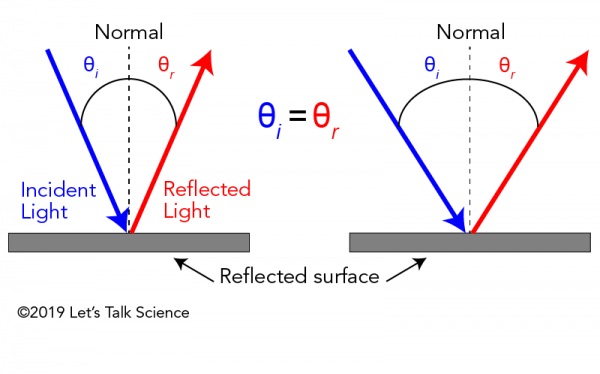
Light reflecting off a smooth surface, where all of the light is reflected in the same direction, is calledspecular reflection. Along a smooth surface, the normal always points the same way, so all of the light is reflected in the same direction (A on the picture below) and the image that is reflected looks the same as the original image.
The normal at different spots along the rough surface points in different directions, which causes the reflected light to go in different directions. This is calleddiffuse reflection. The arrows show in which direction the reflected image will appear when light reflects off a rough surface (B).
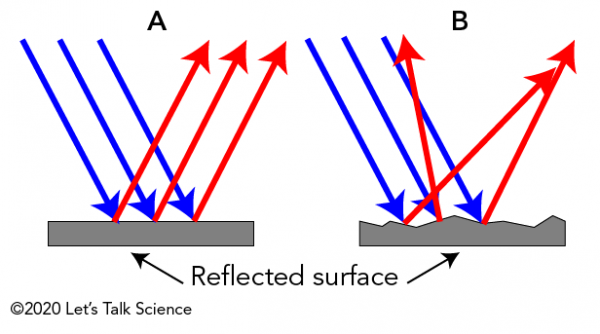
The headlights of a car shine onto the road at night. If the road is dry, the light is diffusely reflected (A), since the pavement is very rough. If the road is wet, the water makes the road surface smoother. There is more specular reflection of the light from the car's headlights (B). This causesglare (light reflected off the surface like a mirror) that makes it hard for drivers to see.
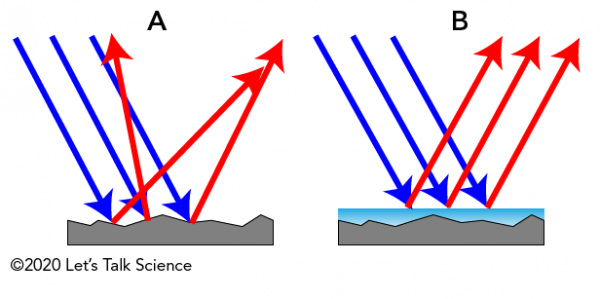
Refraction
When light traveling through one material reaches a second material, some of the light will be reflected, and some of the light will enter the second material. At the point at which the light enters the second material, the light will bend and travel in a different direction than the incident light. This is calledrefraction. Refraction happens because the speed of light is different in different materials (though always less than the speed of light in a vacuum).
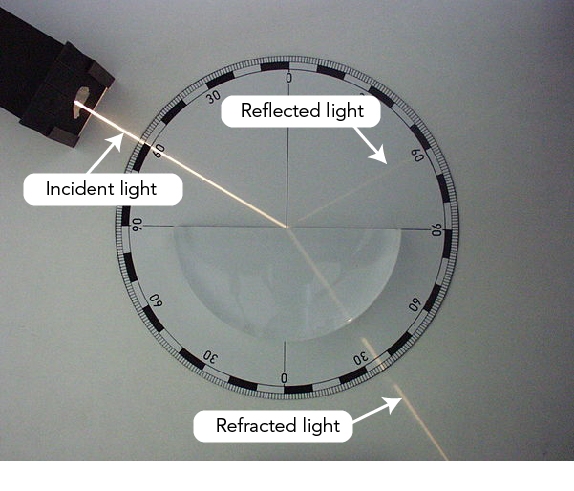
Think about pushing a shopping cart along cement, and then reaching grass, like in the picture below. It's harder to push the cart in the grass, so each wheel slows down when it reaches the grass. The wheels on the pavement are still moving faster, so it causes the cart to change directions (in this case, turn to the right).
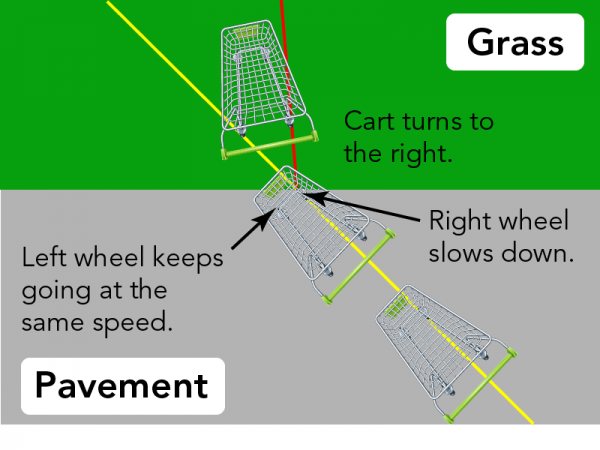
Index of Refraction
Materials have a property called theindex ofrefraction, which is symbolized using the lettern. The index of refraction of a material is equal to the speed of light in a vacuum, divided by the speed of light in the material. The higher the index of refraction, the slower light travels in that medium. If light is traveling in one material and then refracts in a second material, it will bend towards the normal if the index of refraction of the second material,n 2 , is greater than the index of refraction of the first material,n 1 (the light travels slower in the second material) (n 1 < n 2 ) (A). If the second material has a lower index of refraction, the light will bend away from the normal as it travels faster in the second material (n 1 > n 2 ) (B). Unlike reflection, the angle of incidence is not equal to the angle of refraction.
The angle of incidence and angle of refraction are mathematically related to the index of refraction of each material through the law of refraction, also calledSnell's Law.
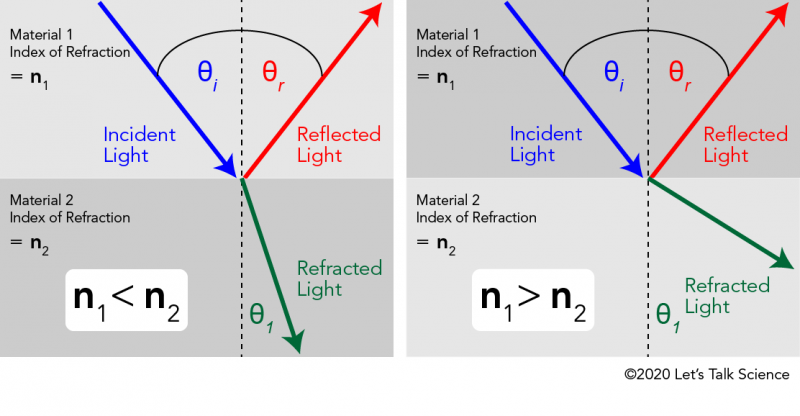
Converging and Diverging Light
Alens is an optical device made of plastic or glass. When light passes through a lens, it can be refracted in predictable ways depending on the shape of the surfaces of the lens. The surface of a lens may beconvex (curved outward) orconcave (curved inward). When parallel beams of light strike a lens that is convex on both sides (double convex lens) the light is refracted inwards and is said to beconverging(A). The beams of light cross at a point called thefocal point which is behind the lens (to the right of the lens). When light strikes a lens that is concave on both sides (biconcave lens), the light is refracted outwards and is said to bediverging(B). In this case, thefocal point is actually in front of (to the left of) the lens.
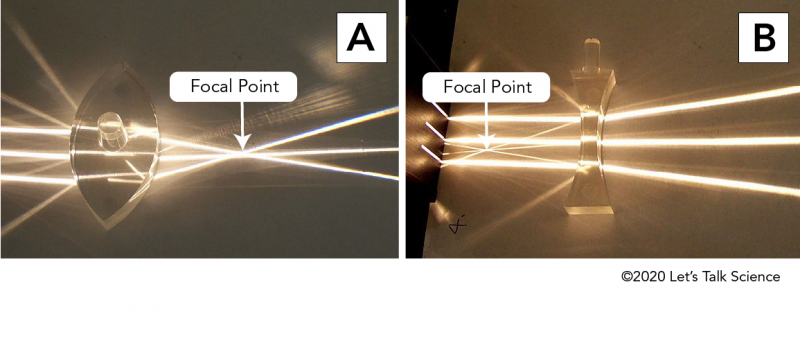
Light through a Prism
Light entering a plastic or glassprism (usually a triangular prism), refracts first as it enters the prism and again as it exits the prism. When white light passes through a prism, it is refracted into all of its colours. If you project this light onto a white surface, you see what looks like a rainbow. All of the colours that make up white light are separated at different angles. This is because each individual colour refracts by a different amount through the prism.
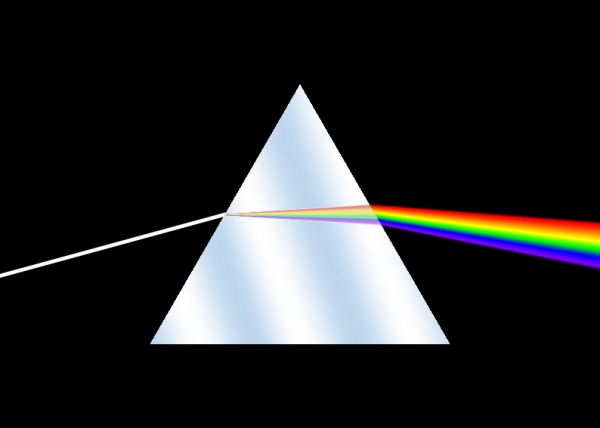
My Career
Emily Altiere
PhD student in Physics, University of British Columbia
For my PhD research project, I am using short wavelengthlasers, known as ultraviolet lasers, to learn more about atoms. Lasers cannot produce ultraviolet light directly, so I built one. I first converted a red laser light source to a green laser. Then I converted the green laser to an ultraviolet laser (almost purple). When I fire the ultraviolet laser at atoms, they absorb the energy from the light and get excited (with more energy). As a result, the atoms start emitting light of certain colours. By observing this process we can learn more about the fundamental properties of atoms. If the atoms are placed in a new environment, such as between two magnets, the atoms will behave a little differently. We can track this difference by how the atoms absorb the laser light. This can help us learn about the magnetic field surrounding these atoms.
Lasers have many applications, and learning about atoms is just one example of how we can use the light and energy from the laser to learn new things about the world that surrounds us. Some common examples of laser uses are laser eye surgery, tattoo removal lasers, and lasers used by the department of defense to track flying aircrafts. I use science and technology every day to do my research. For example, I use mirrors to bounce light back and forth on itself, in order to build up power in the laser light. I use electronics to keep the mirrors in very precise locations. In addition, I often engineer circuits or build mechanical parts to support my experiments. Before I perform any experiment, I use math to predict the results. What I love most about my job is that there are always new challenges and puzzles to solve. When I have a new idea or question, I design and perform an experiment to find the answer, thereby adding new knowledge that can be used by me or other scientists to solve other important research questions.
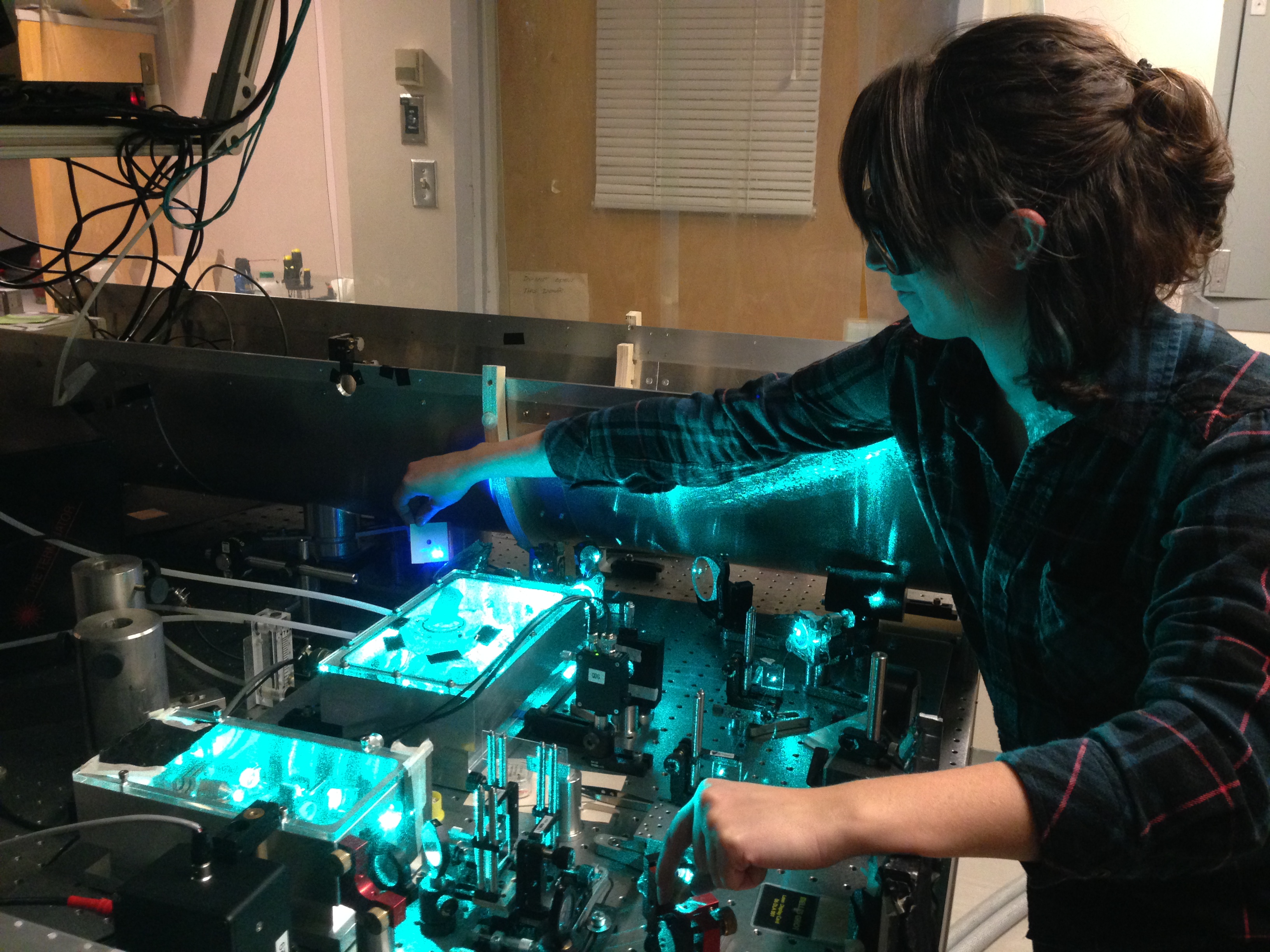
References
The Editors of Encyclopaedia Britannica. (n.d.). Refraction.
Related Topics
The Process in Which Light Bounces Back From an Object
Source: https://letstalkscience.ca/educational-resources/backgrounders/reflection-and-refraction